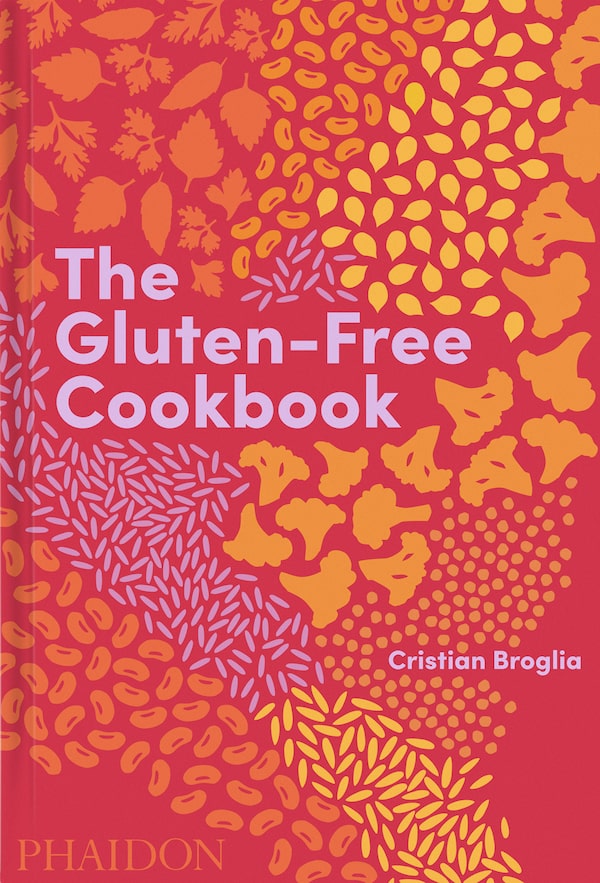Cristian Broglia says the common misconception is that gluten-free cooking is boring because of what it excludes.Handout
Chef Cristian Broglia grew up, as many Italians do, eating a diet rich in gluten. In his hometown of Parma, a city in northern Italy, he routinely ate a breakfast of baked goods, had pizza and/or pasta at lunch, and (usually) more of the same for the evening meal.
It’s been the Italian way for centuries.
It was only when the former executive chef of the International School of Italian Cuisine began to travel – and develop an appreciation for the ingredients and cuisines of different cultures – that Broglia realized just how dependent his country’s diet was on gluten, a protein found in many cereals such as wheat, oats, spelt, barley and rye.
“I realized our diet is not so proper, not so balanced,” Broglia says. That realization set him on a culinary journey – a quest, so to speak – to compile in one book some of the most delicious, naturally gluten-free recipes he could find. “I picked recipes from all over the world,” says Broglia, who included 350 in The Gluten-Free Cookbook.
“The word ‘naturally’ was the first criterion for deciding what to include in the book,” Broglia says. “So, for example, you won’t find pasta in the book because pasta contains gluten and you won’t find any store-bought gluten-free pasta either. My goal is to shake up your repertoire of day-to-day dishes and open your eyes to the possibilities of gluten-free cooking.”
Broglia says the common misconception is that gluten-free cooking is boring because of what it excludes. In his travels, he found the opposite was true. “You can sit at a table in the American South and eat a savoury shrimp and grits, or go to Peru and enjoy ceviche served with sweet potatoes and corn,” he says. “I’ve included an Irish beef stew with colcannon, an amazing flourless chocolate cake from Italy and papadum from India, which are thin crackers made with legumes.”
Each dish is accompanied by a short introduction that describes the dish’s history; its place in the cuisine of the region; and advice on particular ingredients or cooking techniques.

Cristian Broglia included 350 recipes in The Gluten-Free Cookbook.Handout
“As an Italian chef, I’m so proud to show there is another kind of cuisine without gluten,” says Broglia, who adds that he feels “lighter and healthier” having cut a large amount of gluten (but not all) from his own diet.
“I grew up on my mother’s cuisine and every day I used to have pasta dishes on the table. When you eat pasta the first time, you feel good. The second time, your digestion feels heavy, and you are not as happy.
“I would like to suggest to everyone if you eat food without gluten you feel much better,” he continues. “I believe if you eat well, you are well.”
Miso Soba Soup
Preparation time: 10 minutes
Cooking time: 15 minutes
Ingredients (Serves: 4)
- 3 oz (80 g) soba noodles *
- 2 tbsp sesame oil
- 4 tbsp canola (rapeseed oil)
- 2 cloves garlic, minced
- 1 tsp grated fresh ginger
- 3 scallions (spring onions), chopped
- ½ head broccoli, chopped
- 2 carrots, cut into matchsticks
- 4 Tuscan kale (cavolo nero) leaves, stemmed and midribs discarded
- 7 oz (200 g) shelled edamame
- 4 tbsp white miso
- Sesame seeds, for garnish
In a pot of boiling water, cook the soba noodles until al dente, about 2 minutes. Drain and rinse; set aside.
In the same pot, heat the sesame oil over low heat. Return the noodles to the pot and toss to coat with the oil. Remove from the heat.
In a soup pot, heat the canola (rapeseed) oil over low heat. Add the garlic, ginger and scallions (spring onions) and sauté until fragrant, about 4 minutes. Add 6 cups water and bring to a boil. Add the broccoli, carrots, kale and edamame and simmer about 3 minutes. The vegetables used here are merely suggestions; just use whatever you have on hand.
In a small bowl, blend the miso with a spoonful of hot water from the soup pot, then stir the miso into the soup.
To serve, divide the noodles among four bowls. Pour the soup over the noodles and sprinkle sesame seeds on top.
* When buying soba noodles, read the label to be certain that they are 100-per-cent buckwheat flour, as many brands add some wheat flour to the noodle dough to give them more structure.
Excerpted from The Gluten-Free Cookbook by Cristian Broglia. © 2022 Phaidon Press. Reproduced by arrangement with the Publisher. All rights reserved.
Plan your weekend with our Good Taste newsletter, offering wine advice and reviews, recipes, restaurant news and more. Sign up today.
 Gayle MacDonald
Gayle MacDonald